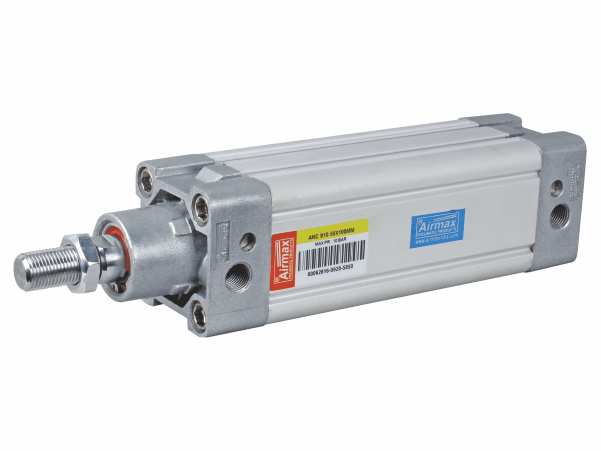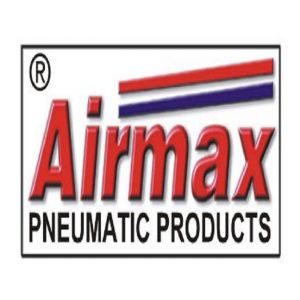Comparing Pneumatic and Hydraulic Systems: The Advantages of Air Cylinders
Posted by Airmax Pneumatics on March 29th, 2024
Pneumatic and hydraulic systems are essential in various industrial applications, offering efficient power transmission and control. Here's a brief overview:
-
Definition: Pneumatic systems use compressed air to transmit power, while hydraulic systems use pressurized fluids, usually oil.
-
Components: Both systems consist of a power source, actuators (cylinders or motors), valves, and control devices.
-
Working Principle: In pneumatic systems, air pressure is utilized to create motion, whereas hydraulic systems employ fluid pressure.
-
Advantages: Pneumatic systems are clean, lightweight, and suitable for fast operations, while hydraulic systems offer high force capabilities and precise control.
-
Applications: Pneumatics are commonly found in industries like manufacturing, automotive, and robotics, while hydraulics are prevalent in heavy machinery, construction equipment, and aerospace.
-
Considerations: Factors such as environment, power requirements, and precision dictate the choice between pneumatic and hydraulic systems.
-
Best Quality Air Cylinder in India: When seeking the best quality air cylinder in India, it's crucial to consider factors like durability, performance, and reliability to ensure optimal system functionality and longevity.
Understanding the fundamentals of pneumatic and hydraulic systems is crucial for efficient industrial operations, and choosing the best quality components, such as air cylinders in India, ensures optimal performance and reliability.
Key Components: Understanding Air Cylinders vs. Hydraulic Actuators
Need to choose between air cylinders and hydraulic actuators for your project? Let's break down the key differences:
Power Source:
-
Air Cylinders: Use compressed air for actuation, readily available and cost-effective.
-
Hydraulic Actuators: Rely on pressurized oil, offering high force and power density.
Force and Speed:
Maintenance:
Choosing the right option depends on your specific needs. For applications requiring clean operation, fast speeds, and readily available power, consider air cylinders. If high force and precise control are paramount, hydraulic actuators might be the better fit.
Looking for the Best Quality Air Cylinder in India? Explore online resources to find reputable manufacturers known for their reliable and high-performing products.
Performance Comparison: Speed, Force, and Accuracy
In the realm of mechanical systems, performance metrics like speed, force, and accuracy play pivotal roles in determining efficiency and effectiveness. Here's a brief comparison:
Speed:
-
Faster actuation reduces cycle times, enhancing overall productivity.
-
High-speed cylinders are ideal for applications requiring rapid movement.
Force:
Accuracy:
When seeking the Best Quality Air Cylinder in India, considering these factors is crucial. Opting for a cylinder that excels in speed, force, and accuracy ensures optimal performance and longevity in diverse applications. Choose wisely to meet your specific requirements and achieve peak operational efficiency.

Energy Efficiency: Evaluating the Power Consumption of Pneumatics and Hydraulics
In the quest for energy efficiency, evaluating the power consumption of pneumatic and hydraulic systems is crucial. Here’s a breakdown:
Pneumatics:
-
Utilizes compressed air to generate power.
-
Generally more energy-efficient for smaller-scale applications.
-
Requires minimal maintenance compared to hydraulics.
-
Ideal for tasks requiring high speed and quick response.
Hydraulics:
-
Utilizes pressurized liquid (usually oil) to transmit power.
-
More efficient for heavy-duty applications and high force requirements.
-
Requires careful maintenance due to the risk of fluid leaks.
-
Provides precise control and high force output.
When considering energy efficiency, factors such as application, load requirements, and maintenance play a significant role. Choose wisely based on your specific needs and environmental concerns. For instance, for applications demanding both energy efficiency and performance, investing in the Best Quality Air Cylinder in India could be a prudent choice, combining efficiency with reliability.
Environmental Considerations: Sustainability and Fluid Management
In today's industrial landscape, prioritizing environmental considerations is paramount. Sustainability and effective fluid management practices not only contribute to a healthier planet but also enhance operational efficiency and cost-effectiveness. Here's a brief overview:
-
Resource Conservation: Implementing sustainable fluid management techniques minimizes resource consumption and waste generation, reducing environmental impact.
-
Renewable Energy Integration: Leveraging renewable energy sources for fluid management operations reduces carbon footprint and reliance on non-renewable resources.
-
Eco-Friendly Fluids: Adopting environmentally friendly fluids such as biodegradable hydraulic oils and coolants ensures minimal harm to ecosystems.
-
Efficient Equipment: Investing in energy-efficient machinery and equipment, such as the Best Quality Air Cylinder in India, promotes sustainable operations while maintaining productivity.
-
Waste Reduction: Implementing recycling and reclamation programs for fluids minimizes waste disposal and conserves valuable resources.
By integrating sustainability principles into fluid management practices, businesses can achieve environmental stewardship while enhancing their bottom line.
Maintenance and Operating Costs: Analyzing Long-Term Expenses
Understanding the maintenance and operating costs associated with any equipment or machinery is crucial for efficient budgeting and long-term sustainability. Here's a breakdown to help navigate these expenses:
-
Regular Maintenance: Scheduled upkeep ensures optimal performance and longevity of equipment.
-
Replacement Parts: Budgeting for parts replacement prevents unexpected downtime and costly repairs.
-
Energy Consumption: Monitoring energy usage helps identify inefficiencies and reduces operational costs.
-
Training and Skill Development: Investing in staff training enhances equipment operation efficiency and minimizes errors.
-
Life Cycle Analysis: Assessing the overall lifespan of equipment aids in predicting replacement or refurbishment needs.
Considering these factors ensures informed decision-making and cost-effective management. When seeking reliable equipment, consider investing in the Best Quality Air Cylinder in India for long-term efficiency and durability.
Safety Factors: Risk Assessment and Mitigation Strategies
Ensuring the safety of your air operations starts with using the best quality air cylinders. In India, where reliable equipment is paramount, choosing cylinders that meet stringent standards is crucial.
Risk Assessment:
-
Identify potential hazards: leaks, malfunctions, improper use.
-
Evaluate likelihood and impact of each risk.
Mitigation Strategies:
-
Invest in Best Quality Air Cylinders in India certified by reputable agencies.
-
Conduct regular inspections and maintenance by qualified personnel.
-
Train personnel on safe handling and storage procedures.
-
Develop emergency response plans for potential incidents.
By prioritizing safety through risk assessment and mitigation, you can ensure the longevity and effectiveness of your air cylinders. Remember, using high-quality equipment is an investment in both safety and performance.


